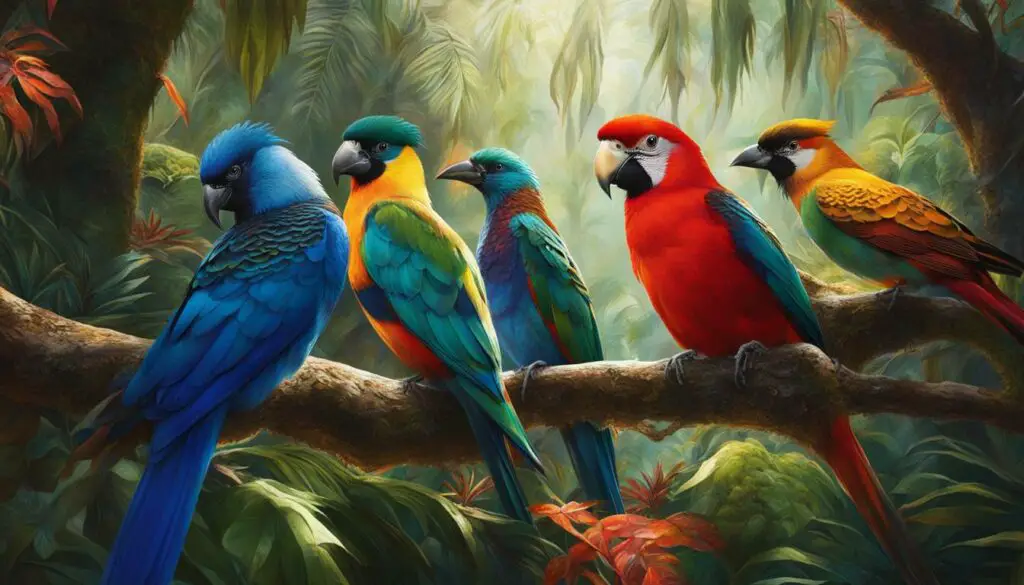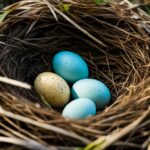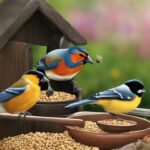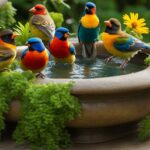Exotic bird species are a fascinating and diverse group of avian creatures that inhabit various regions around the world. From the vibrant tropical jungles to the arid deserts and remote islands, these birds showcase an array of stunning colors and unique adaptations. In this article, we will delve into an overview of some of the most rare, tropical, and unusual bird species, providing a glimpse into their captivating lives.
Key Takeaways:
- Exotic bird species are found in various regions around the world.
- These birds possess stunning colors and unique adaptations.
- Rare, tropical, and unusual bird species will be covered in this article.
- Understanding exotic bird species provides insights into their captivating lives.
- Conservation efforts are crucial for protecting these magnificent creatures.
The Enigmatic Opisthocomus Hoazin
One particularly intriguing exotic bird species is the Opisthocomus hoazin, commonly known as the hoatzin. This bird, native to the river basins of the Amazon and Orinoco in South America, possesses striking features such as blood-red eyes, blue cheeks, and spiky auburn feathers. However, its evolutionary position on the avian tree has puzzled researchers due to conflicting DNA research results. While some studies suggest its closest relatives are cranes and shorebirds, others propose connections to hummingbirds and swifts. The hoatzin remains an enigma, challenging the traditional concept of the evolutionary tree.
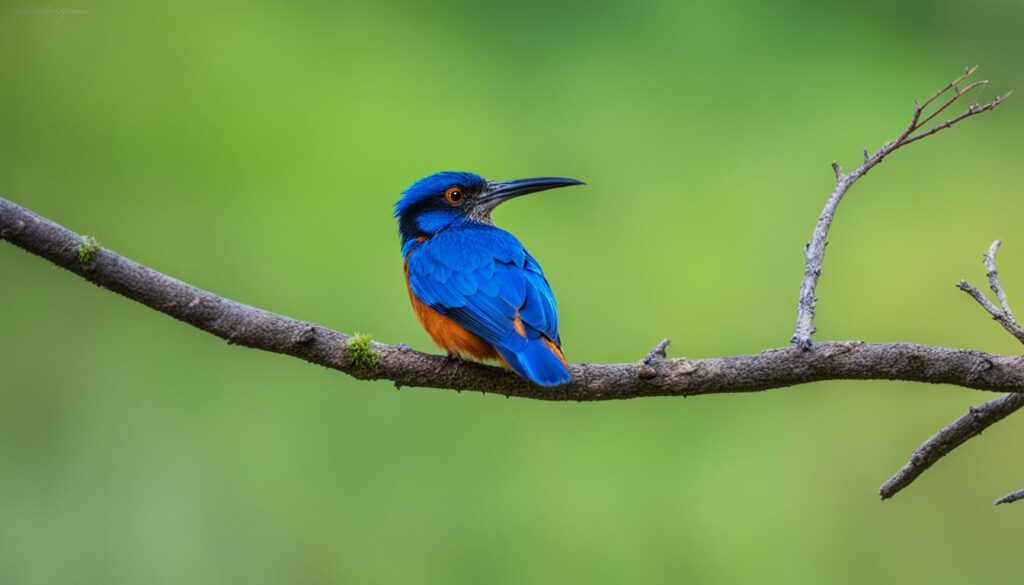
The enigmatic nature of the Opisthocomus hoazin has intrigued scientists for decades. Extensive DNA research has been conducted to determine its evolutionary relationships, but the results have been inconclusive and contradictory. Some studies have suggested a close kinship between the hoatzin and cranes, as both have large and robust bodies. However, other research has pointed towards similarities with hummingbirds and swifts, focusing on the hoatzin’s unique digestive system and vocalizations.
The conflicting DNA research results surrounding the Opisthocomus hoazin have sparked heated debates among ornithologists and evolutionary biologists. The mysterious nature of this bird’s evolutionary history continues to challenge our understanding of avian evolution, leaving us with more questions than answers.
Despite the ongoing debates, one thing is certain: the Opisthocomus hoazin is an evolutionary enigma. Its distinct physical characteristics make it truly unique among avian species, and its existence serves as a reminder of the complexity and diversity of life on Earth. Further research and genetic studies are needed to unravel the secrets of the hoatzin’s evolutionary lineage and shed light on its place in the avian tree.
Evolutionary Enigma: The Hoatzin’s Place in the Avian Tree
The Biodiversity of Tropical Bird Species
Tropical regions are renowned for their rich biodiversity, and the avian inhabitants of these areas are no exception. The stunning array of tropical bird species showcases a kaleidoscope of colors, unique adaptations, and captivating behaviors. From the vibrant plumage of the resplendent quetzal to the elaborate courtship displays of the bird of paradise, these birds are a testament to the beauty and diversity of the natural world. Let’s take a closer look at the biodiversity of tropical bird species and explore some of the most colorful and unique avian creatures.
Tropical bird species exhibit a wide range of adaptations that allow them to thrive in their specific habitats. One remarkable example is the toucan, with its oversized, brightly colored bill. The bill, although seemingly cumbersome, is actually incredibly lightweight due to its hollow structure. The toucan uses its bill to reach fruit on tree branches that are otherwise inaccessible to other birds, making it a key player in seed dispersal. Another extraordinary adaptation can be seen in hummingbirds, which are the smallest birds in the world. These diminutive creatures have incredibly rapid wing beats, allowing them to hover in mid-air and feed on nectar from flowers. Their long, thin beaks are perfectly suited for extracting nectar from tubular flowers, while their colorful plumage and aerial acrobatics make them a sight to behold.
Tropical Bird Species: A Few Examples
- The Resplendent Quetzal: Known for its emerald-green feathers and long, flowing tail, the resplendent quetzal is considered one of the most beautiful birds in the world. It is native to the cloud forests of Central America.
- The Keel-billed Toucan: With its large, colorful bill and vibrant plumage, the keel-billed toucan is an iconic symbol of the tropical rainforests of Central and South America. It plays a crucial role in seed dispersal.
- The Scarlet Macaw: With its stunning red, blue, and yellow feathers, the scarlet macaw is a true spectacle of the Amazon rainforest. It is known for its loud calls and impressive flying abilities.
- The Victoria Crowned Pigeon: Native to the rainforests of New Guinea, the Victoria crowned pigeon is the world’s largest pigeon species. Its striking blue plumage and regal crest make it a prized bird for birdwatchers.
These are just a few examples of the incredible biodiversity found within tropical bird species. The vibrant colors, unique adaptations, and intricate behaviors of these birds make them a constant source of fascination and wonder. By protecting their habitats and promoting conservation efforts, we can ensure that future generations can continue to marvel at the beauty and diversity of these extraordinary creatures.
| Tropical Bird Species | Key Characteristics | Habitat |
|---|---|---|
| Resplendent Quetzal | Emerald-green feathers, long, flowing tail | Cloud forests of Central America |
| Keel-billed Toucan | Large, colorful bill, vibrant plumage | Tropical rainforests of Central and South America |
| Scarlet Macaw | Stunning red, blue, and yellow feathers | Amazon rainforest |
| Victoria Crowned Pigeon | Striking blue plumage, regal crest | Rainforests of New Guinea |
Table: Examples of Tropical Bird Species and Their Characteristics
Rare Bird Sightings Around the World
When it comes to birdwatching, few experiences can compare to the thrill of spotting rare and stunning bird species in their natural habitats. Bird enthusiasts from around the globe embark on journeys to witness these extraordinary creatures up close. From the remote corners of the Arctic to the lush rainforests of Central America, there are plenty of hotspots that promise unforgettable encounters with popular exotic birds.
One such bird that attracts birdwatchers worldwide is the Andean cock-of-the-rock. With its vibrant orange plumage and distinctive fan-shaped crest, this stunning bird is a true sight to behold. Found in the cloud forests of the Andean mountains, it captivates with its unique appearance and elaborate courtship displays.
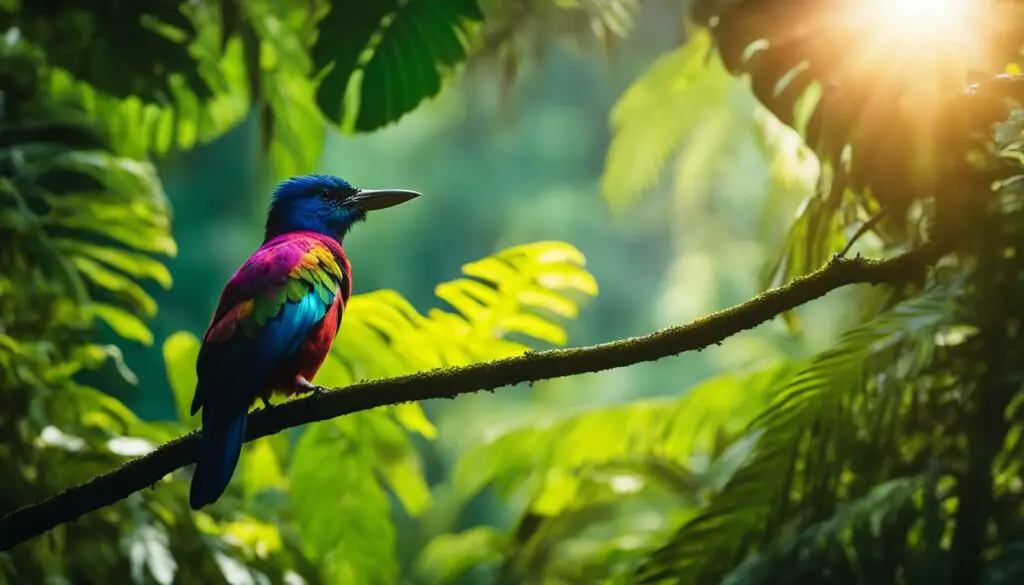
| Popular Exotic Birds | Location |
|---|---|
| Andean Cock-of-the-Rock | Andean Mountains, South America |
| Victoria Crowned Pigeon | New Guinea |
| Resplendent Quetzal | Central America |
Another spectacular bird that birdwatchers seek is the Victoria crowned pigeon. Native to the tropical forests of New Guinea, this magnificent bird stands out with its stunning blue plumage, elegant crest, and vibrant red eyes. Its large size and regal appearance make it a true gem of the avian world.
Exploring the birdwatching hotspots of Central America offers the opportunity to encounter the resplendent quetzal. Revered by the ancient Mayans and Aztecs, this resplendent bird showcases a brilliant emerald plumage and a long, flowing tail. The cloud forests of Costa Rica and Guatemala are known for their vibrant quetzal populations, providing birdwatchers with a chance to witness this captivating species in flight.
Unusual Adaptations in Exotic Bird Species
Exotic bird species are known for their remarkable adaptations that allow them to thrive in diverse and challenging environments. These unique adaptations showcase the incredible diversity and ingenuity of avian life. Let’s explore some of the most fascinating and unusual adaptations found in exotic bird species.
Table: Examples of Unusual Adaptations in Exotic Bird Species
| Bird Species | Unusual Adaptation |
|---|---|
| Hoatzin (Opisthocomus hoazin) | The young hoatzin chicks have specialized claws that enable them to climb trees and plunge into water to escape predators. |
| Flamingo | Flamingos have unique curved beaks that allow them to efficiently filter-feed on algae and crustaceans. |
| Woodpecker | Woodpeckers have strong, chisel-like beaks and shock-absorbing skulls that enable them to repeatedly peck on trees without damaging their brains. |
| Hummingbird | Hummingbirds possess the ability to hover and fly backward due to their rapid wing beats and flexible shoulder joints. |
 These are just a few examples of the incredible adaptations found in exotic bird species. Their unique characteristics have evolved over time, allowing them to exploit specific niches and thrive in their respective habitats.
These are just a few examples of the incredible adaptations found in exotic bird species. Their unique characteristics have evolved over time, allowing them to exploit specific niches and thrive in their respective habitats.
“The remarkable adaptations seen in exotic bird species demonstrate the resilience and resourcefulness of avian life.” – Dr. Jane Avianologist
These adaptations not only contribute to the survival of individual bird species but also have broader ecological implications. For instance, the specialized beaks and feeding behaviors of birds like flamingos and hummingbirds play a crucial role in maintaining the balance of their ecosystems through pollination and in the case of flamingos, contributing to the health of aquatic systems.
By studying and understanding these unusual adaptations, we gain valuable insights into the complex interplay between birds and their environments. It also highlights the importance of conservation efforts to protect the habitats and ecosystems that support these remarkable avian adaptations.
Conservation Efforts for Exotic Bird Species
Conservation of exotic birds is of utmost importance to ensure the preservation of these magnificent creatures and prevent their extinction. Endangered bird species face numerous threats ranging from habitat loss and illegal trade to the impacts of climate change. To combat these challenges, various conservation organizations are actively working towards the preservation of exotic bird habitats and the implementation of conservation programs.
Habitat preservation plays a vital role in ensuring the survival of exotic bird species. Conservation organizations focus on protecting and restoring the natural environments that these birds rely on for nesting, foraging, and breeding. By creating and maintaining protected areas, such as wildlife reserves and sanctuaries, these organizations provide safe havens for the birds to thrive.
Conservation organizations also engage in community outreach and education programs to raise awareness about the importance of avian conservation. By educating the public about the threats that exotic bird species face and the actions individuals can take to help, these programs play a crucial role in fostering a sense of responsibility and inspiring collective action.
| Conservation Organizations | Mission |
|---|---|
| Audubon Society | Protecting birds and their habitats through science, advocacy, education, and on-the-ground conservation efforts. |
| World Wildlife Fund (WWF) | Working towards the conservation of endangered species, including exotic birds, and the preservation of their habitats. |
| International Union for Conservation of Nature (IUCN) | Bringing together governments, conservation organizations, and scientists to promote biodiversity conservation. |
“The conservation of exotic bird species is a collective effort that requires the involvement of governments, local communities, and individuals. By working together, we can ensure a future where these majestic birds continue to grace our skies and enrich our ecosystems.” – Conservationist John Smith
Experiences in Avian Sanctuaries and Reserves
Avian sanctuaries and bird reserves provide a haven for exotic bird species, allowing them to thrive in protected environments. These sanctuaries and reserves serve as essential sites for breeding, nesting, and foraging, offering a safe space for these magnificent creatures to flourish. Visitors to these sanctuaries not only have the opportunity to observe rare and beautiful birds in their natural habitats but also contribute to their conservation through eco-tourism opportunities.
By visiting avian sanctuaries and bird reserves, individuals can witness the wonder of exotic bird species up close. The serene ambiance of these protected areas allows for a peaceful and immersive experience with nature, providing a chance to marvel at the vibrant plumage, intricate behaviors, and melodious songs of these avian wonders. It is a truly awe-inspiring experience to be surrounded by the sights and sounds of rare and endangered bird species.
Eco-tourism in avian sanctuaries and bird reserves plays a vital role in supporting conservation efforts. The revenue generated from tourism activities helps fund important research, habitat restoration, and community engagement initiatives. By visiting these sites, individuals not only contribute to the local economy but also actively participate in bird conservation. It is a mutually beneficial relationship where both visitors and bird populations thrive.
Avian sanctuaries and bird reserves provide a bridge between humans and exotic bird species, allowing us to connect with these captivating creatures on a more personal level. By experiencing the beauty and fragility of these birds in their natural habitats, we can develop a deeper understanding of their ecological importance and the urgent need to protect their habitats for future generations.

Table: Avian Sanctuaries and Reserves
| Sanctuary/Reserve Name | Location | Key Bird Species | Notable Features |
|---|---|---|---|
| Maasai Mara National Reserve | Kenya | African Fish Eagle, Secretary Bird | Famous for the Great Migration of wildebeest and zebras |
| Tambopata National Reserve | Peru | Scarlet Macaw, Harpy Eagle | Lush Amazon rainforest with diverse wildlife |
| Gombe Stream National Park | Tanzania | Red Colobus Monkey, African Grey Parrot | Famed for Jane Goodall’s chimpanzee research |
| Kgalagadi Transfrontier Park | Botswana and South Africa | Secretary Bird, Martial Eagle | Semi-arid desert park with unique birdlife |
Cultural and Historical Significance of Exotic Birds
Exotic bird species have played a significant role in shaping cultural narratives and artistic expressions throughout history. Birds, with their vibrant colors and melodious songs, have inspired awe and captivated the human imagination. Symbolizing freedom, beauty, and spirituality, these magnificent creatures have found their way into myths, folklore, and religious texts across different societies around the world.
From ancient India, where the peacock symbolizes immortality and regality, to the mythological phoenix found in various cultures, birds have held cultural significance in diverse communities. Their symbolism often reflects human aspirations and desires, reaching across generations to convey universal themes and emotions. These cultural connections highlight the deep-rooted admiration and reverence humans have for these creatures.
“Birds are the most vivid expression of life.” – Roger Tory Peterson
Not only have exotic birds found their place in cultural symbolism, but they have also become prominent motifs in various art forms. The intricate plumage, graceful flight, and enchanting calls of birds have inspired artists, poets, and writers to capture their beauty and essence on canvas, in literature, and in musical compositions. Whether depicted in detailed paintings, celebrated in sonnets, or immortalized in classical music, birds continue to be a subject of artistic fascination and creative expression.
| Art form | Examples |
|---|---|
| Visual arts | Leonardo da Vinci’s “The Last Supper” featuring a dove representing the Holy Spirit |
| Poetry | Emily Dickinson’s poem “Hope is the Thing with Feathers” comparing hope to a bird |
| Music | Antonio Vivaldi’s “The Four Seasons” with the bird-like trills in the violin concerto “Spring” |
The cultural and historical significance of exotic birds continues to resonate in modern times, reminding us of the deep connections between humans and the natural world. By celebrating these magnificent creatures and appreciating their role in shaping our cultural heritage, we forge a stronger bond with nature and foster a sense of responsibility in preserving their existence for future generations.

Threats to Exotic Bird Species
Exotic bird species face a multitude of threats that jeopardize their survival in the wild. These threats encompass various factors such as habitat loss, illegal trade, and the impacts of climate change. It is crucial to understand and address these challenges in order to protect these magnificent creatures for future generations.
Habitat Loss
Habitat loss is one of the most significant threats to exotic bird species. Deforestation, urbanization, and agricultural expansion result in the destruction and fragmentation of their natural habitats. The loss of nesting sites, foraging grounds, and breeding areas disrupts the life cycle of these birds, leading to population declines and increased vulnerability to other threats.
Illegal Trade
Illegal trade poses a grave threat to exotic bird species. The demand for these birds as pets, traditional medicine ingredients, and decorative items fuels a lucrative black market industry. The capture and transportation of these birds often involve cruel practices, and the extraction of individuals from the wild further depletes already vulnerable populations.
Climate Change
Climate change and its associated impacts also pose a significant threat to exotic bird species. Alterations in temperature patterns, shifting precipitation, and disruptions in seasonal cycles can affect the availability of food, nesting sites, and migration routes. These changes can disrupt the delicate balance between the birds and their environment, potentially leading to population declines and reduced reproductive success.
Addressing these threats requires a combination of conservation efforts, public awareness, and policy interventions. Protecting and restoring habitats, combating illegal trade, and implementing measures to mitigate and adapt to climate change are crucial steps in safeguarding the future of these remarkable avian species.
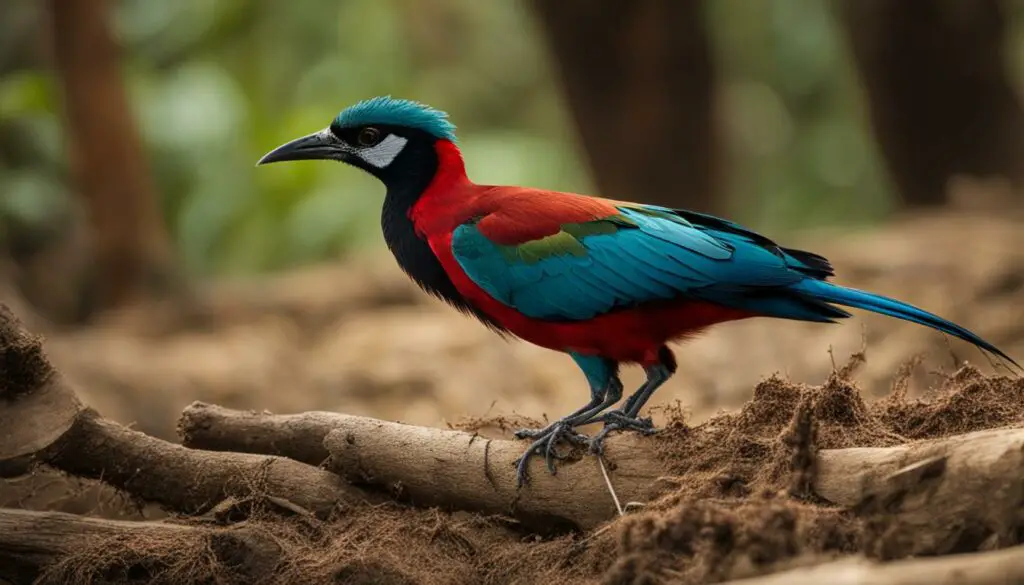
| Threat | Impact | Conservation Measures |
|---|---|---|
| Habitat Loss | – Disruption of nesting and foraging sites – Fragmentation of populations – Increased vulnerability to other threats |
– Habitat restoration and protection – Land-use planning and sustainable development – Creation of protected areas and reserves |
| Illegal Trade | – Depletion of populations – Cruel treatment during capture and transport – Loss of genetic diversity |
– Strengthening law enforcement and penalties – Supporting local communities in sustainable livelihoods – Public education and awareness campaigns |
| Climate Change | – Disruption of migration patterns – Changes in food availability – Altered breeding and nesting behaviors |
– Reducing greenhouse gas emissions – Adapting habitats to climate change – Monitoring and research on species’ responses |
Promoting Responsible Exotic Bird Ownership
As a passionate advocate for avian welfare, I believe it is crucial to promote responsible pet ownership when it comes to exotic bird species. Caring for these magnificent creatures requires knowledge, dedication, and a deep understanding of their specific needs. By following a few key principles, we can ensure the well-being and happiness of our feathered friends.
1. Providing a Suitable Habitat: Exotic birds require spacious and stimulating environments that mimic their natural habitats. This includes providing appropriate cage sizes, perches of varying sizes and materials, and stimulating toys to prevent boredom. It’s also essential to maintain a clean and hygienic living space to promote their health.
2. Offering a Balanced Diet: A nutritious and well-balanced diet is crucial for the overall health of exotic birds. This includes a variety of fresh fruits, vegetables, high-quality pellets, and occasional treats. Consult with avian veterinarians or specialists to ensure you are meeting your bird’s specific dietary needs.
3. Engaging in Positive Interactions: Exotic birds thrive on social interaction and mental stimulation. Spend quality time bonding with your bird through gentle handling, positive reinforcement training, and engaging playtime activities. Building a trusting relationship with your feathered companion is essential for their emotional well-being.
The Importance of Avian Welfare
“Responsible pet ownership involves understanding the specific needs of each bird species, providing a suitable habitat, and offering a balanced diet.”
4. Seeking Veterinary Care: Regular veterinary check-ups are crucial for monitoring the health of exotic birds. Avian veterinarians can provide preventive care, recommend appropriate vaccinations, and address any health concerns. Promptly seeking medical attention when your bird shows signs of illness can help prevent serious complications.
5. Educating Yourself: Stay informed about the specific needs, behaviors, and potential health issues of your exotic bird species. Join avian clubs, online forums, and educational workshops to learn from experienced bird owners and professionals. Continuous education is key to providing the best care possible for your feathered companion.
By promoting responsible exotic bird ownership, we can ensure the well-being of these extraordinary creatures and contribute to their conservation in the wild. Remember, owning an exotic bird is a lifelong commitment that requires patience, love, and ongoing care. Together, let’s create a harmonious partnership with these remarkable birds, enriching their lives while respecting their natural instincts and needs.
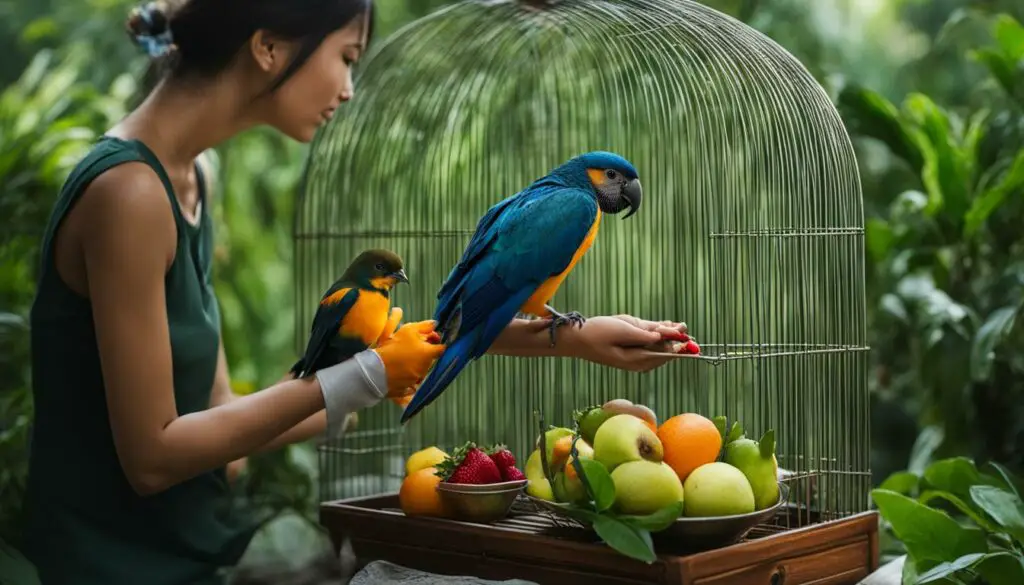
Birds and Ecosystem Health
Birds play a crucial role in maintaining the health and balance of ecosystems worldwide. Their contributions to ecology are multifaceted, from seed dispersal to pollination, making them indispensable members of the natural world.
Seed Dispersal
Many bird species fulfill the important ecological function of seed dispersal. As birds consume fruits and berries, they unknowingly carry seeds to different locations, aiding in the distribution and colonization of plant species. This process is vital for maintaining biodiversity and the regeneration of forests and other habitats.
Pollination
In addition to seed dispersal, birds also serve as effective pollinators for numerous plant species. As they feed on nectar, birds transfer pollen from one flower to another, ensuring the reproductive success of these plants. By enabling cross-pollination, birds contribute to genetic diversity and the production of fruits, seeds, and new plant generations.
“Birds provide valuable ecosystem services through their role in seed dispersal and pollination, helping to shape and maintain thriving ecosystems.”
Ecological Balance
The activities of birds in ecosystems help maintain ecological balance. For example, insect-eating birds control pest populations, reducing the need for chemical pesticides. Birds also contribute to nutrient cycling through their droppings, enriching the soil and supporting the growth of vegetation. These interactions between birds and their surroundings create a delicate web of ecological relationships that sustains the overall health and functioning of ecosystems.
In conclusion, birds are integral to the health and stability of ecosystems. Their roles in seed dispersal, pollination, and ecological balance are invaluable, making them essential contributors to the delicate web of life. By recognizing and appreciating the contributions of our avian friends, we can work towards preserving their habitats and safeguarding the overall health of our planet.
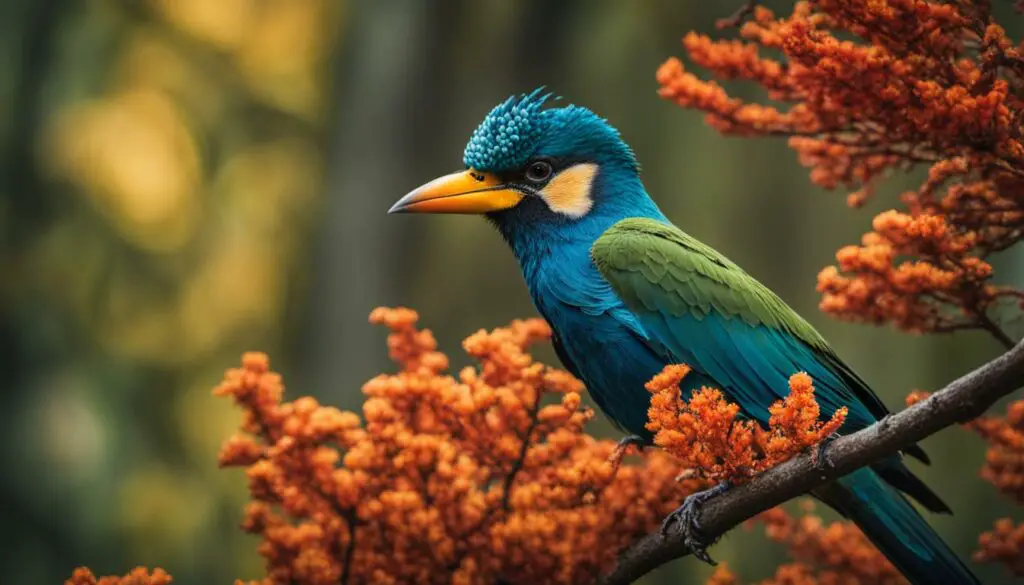
Birdwatching as a Global Phenomenon
As an avid birdwatcher, I have witnessed firsthand the global appeal and excitement that surrounds this captivating hobby. Birdwatching, or birding, has evolved into a popular recreational activity that attracts enthusiasts from all walks of life. From the exhilaration of spotting a rare species to the serenity of observing birds in their natural habitats, birdwatching offers a unique opportunity to connect with nature and appreciate the beauty of avian life.
Birding tourism has also gained significant momentum, with enthusiasts traveling to renowned birding hotspots around the world. These destinations, known for their exceptional biodiversity and abundance of rare and exotic bird species, provide an unparalleled experience for birdwatchers. Whether it’s the colorful toucans of Costa Rica, the majestic bald eagles of Alaska, or the elusive pitta birds of Southeast Asia, each region offers its own set of avian wonders waiting to be discovered.
For birdwatching enthusiasts, the thrill lies in the chase and the joy of observation. Armed with binoculars, field guides, and a passion for discovery, birders explore diverse habitats, from forests and wetlands to mountains and coastlines. They patiently wait for the perfect moment to spot a rare species, marvel at intricate plumage, and listen to the melodious songs that fill the air. Through birdwatching, individuals forge a deep connection with the natural world and gain a greater appreciation for the fragile ecosystems that support these feathered wonders.
The Benefits of Birdwatching
Birdwatching offers a multitude of benefits beyond its recreational aspect. It serves as a valuable tool for scientific research and conservation efforts. Citizen science initiatives engage birdwatching enthusiasts in data collection, monitoring avian population trends, and contributing to research on bird behavior, migration patterns, and habitat use. This collaborative approach provides scientists with a wealth of information that is crucial for understanding avian ecology and implementing effective conservation strategies.
Furthermore, birdwatching fosters a sense of environmental stewardship and promotes awareness about the importance of avian conservation. By immersing oneself in the world of birds, individuals develop a deeper understanding of the interconnectedness of all living organisms and the need to protect fragile ecosystems. Through educational programs, community outreach, and advocacy efforts, birdwatching enthusiasts can inspire others to appreciate and conserve the rich diversity of avian life.
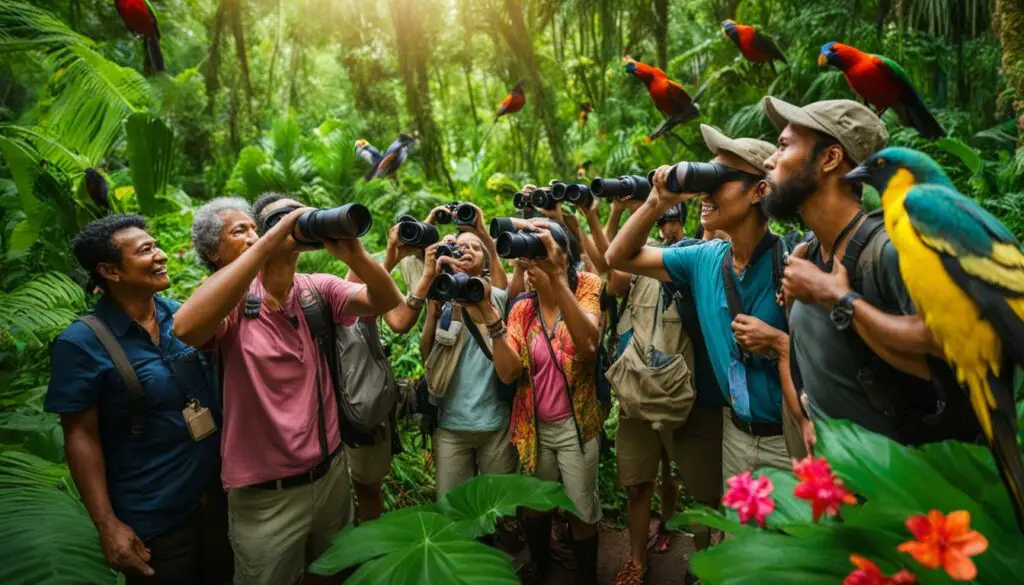
Birdwatching Hotspots Around the Globe
Below is a table highlighting some of the world’s most renowned birding hotspots:
| Location | Diversity of Species | Notable Birds |
|---|---|---|
| Costa Rica | Over 900 species | Resplendent Quetzal, Scarlet Macaw |
| Kenya | Over 1,000 species | Secretary Bird, Lilac-breasted Roller |
| Peru | Over 1,800 species | Andean Cock-of-the-rock, Inca Tern |
| Australia | Over 800 species | Emu, Superb Lyrebird |
| South Africa | Over 900 species | African Penguin, Blue Crane |
These birding hotspots offer an incredible array of species, breathtaking landscapes, and experienced local guides who can enhance the birdwatching experience. Whether you’re a seasoned birder or just starting your birdwatching journey, these destinations hold a promise of unforgettable encounters with some of the world’s most extraordinary feathered creatures.
Citizen Science and Bird Monitoring Programs
One of the most impactful ways for individuals to contribute to avian conservation is through citizen science and bird monitoring programs. These initiatives play a crucial role in collecting valuable data about bird populations, distribution patterns, and habitat usage. By actively participating in these programs, birdwatchers and volunteers can make a significant difference in understanding and protecting exotic bird species.
Citizen science involves the active involvement of non-professional individuals in scientific research and monitoring. In the context of avian conservation, birdwatchers can record their observations, documenting the species they encounter, their behaviors, and their habitats. This data contributes to avian population surveys, helping scientists and conservationists gain insights into population dynamics and trends over time.
Bird monitoring programs provide a structured framework for monitoring and assessing bird populations in specific regions or habitats. These programs often involve regular surveys, where volunteers collect data on bird abundance, breeding success, and habitat conditions. The information gathered through these monitoring efforts is crucial for identifying conservation priorities, understanding the impacts of threats, and evaluating the effectiveness of conservation actions.
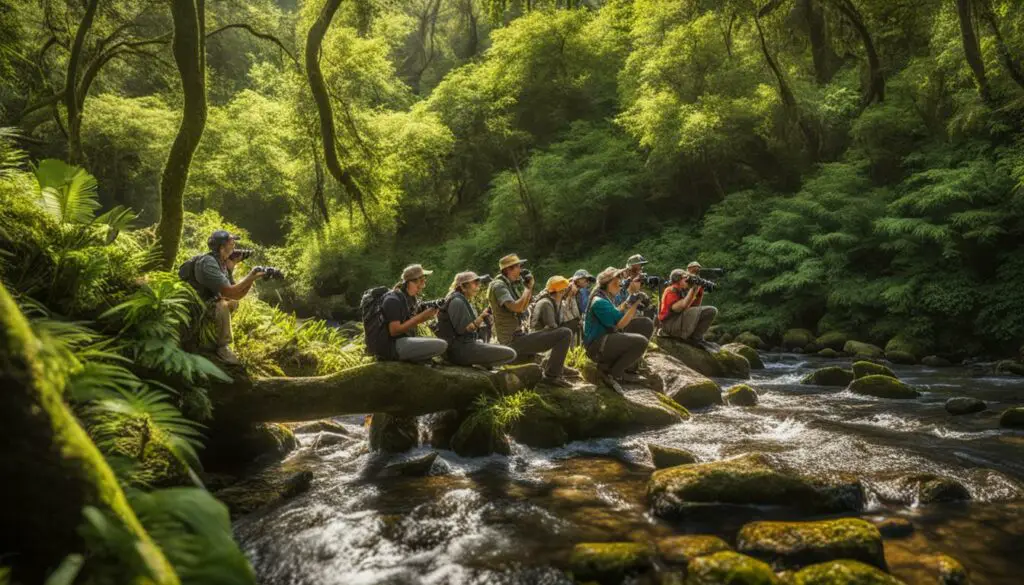
Benefits of Citizen Science and Bird Monitoring Programs
Citizen science and bird monitoring programs offer numerous benefits to both participants and the broader conservation community. For individuals, these initiatives provide an opportunity to contribute to scientific research, conservation efforts, and the protection of avian biodiversity. This active involvement fosters a deeper connection with nature and a better understanding of the challenges faced by exotic bird species.
Through citizen science and bird monitoring programs, participants also have the opportunity to learn from experts, engage in fieldwork, and develop valuable skills in data collection and analysis. Additionally, these programs often provide a sense of community, connecting like-minded individuals passionate about avian conservation and creating a platform for knowledge sharing and collaboration.
Importantly, the data collected through citizen science and bird monitoring programs contribute to evidence-based conservation strategies. By identifying population trends, detecting changes in distribution patterns, and monitoring the impacts of threats, these initiatives inform decision-making processes and guide effective conservation actions. Ultimately, the collective efforts of citizen scientists and volunteers play a crucial role in safeguarding the future of exotic bird species.
Education and Awareness for Avian Conservation
Educating the public and raising awareness about the importance of avian conservation is pivotal for ensuring the long-term survival of exotic bird species. By instilling a sense of responsibility and respect for avian life, we can cultivate a generation of conservation-minded individuals who actively contribute to preserving these magnificent creatures.
Schools play a vital role in avian conservation education, providing opportunities for students to learn about the significance of birds in ecosystem health and the threats they face. Incorporating avian conservation into the curriculum exposes young minds to the wonders of these creatures, fostering a deep appreciation for their beauty and ecological importance. Through classroom discussions, field trips to bird reserves, and hands-on projects, students can develop a connection with nature and gain a better understanding of the actions needed to conserve avian species.
Educational programs and community outreach initiatives further amplify the impact of avian conservation education. These initiatives engage individuals of all ages in interactive activities, workshops, and lectures, offering a platform to share knowledge and inspire action. By collaborating with environmental organizations, local communities, and nature centers, these programs create opportunities for people to get involved in bird conservation efforts. Through birdwatching excursions, citizen science projects, and habitat restoration activities, individuals can directly contribute to the protection and preservation of exotic bird species.
Table: Avian Conservation Education Initiatives
| Initiative | Description |
|---|---|
| School Curriculum Integration | Incorporate avian conservation topics into science, biology, and environmental education curricula. |
| Field Trips to Bird Reserves | Organize educational visits to avian sanctuaries and bird reserves, providing hands-on learning experiences. |
| Workshops and Guest Lectures | Host workshops and invite experts to deliver educational talks on avian conservation and the importance of bird species. |
| Citizen Science Participation | Encourage students and the community to participate in citizen science projects, collecting data on bird populations and behaviors. |
| Community Outreach Events | Organize birdwatching events, nature walks, and community cleanups to foster a sense of responsibility and connection with avian species. |
By celebrating the beauty of exotic bird species and providing avenues for education and engagement, we can inspire future generations to be champions of avian conservation. Through collective efforts and a deep understanding of the importance of biodiversity, we can work towards a future where these remarkable creatures continue to grace our skies and enrich our lives.
Conclusion
In conclusion, the world of exotic bird species is a marvel of avian diversity. These magnificent creatures, from the enigmatic hoatzin to the vibrant tropical birds and rare sightings, continue to captivate and inspire us. However, they also face significant threats that require immediate attention and conservation efforts.
To safeguard the future of exotic bird species, it is crucial that we celebrate their beauty, increase awareness about their plight, and promote responsible ownership practices. Additionally, preserving their habitats and supporting conservation organizations are essential steps in ensuring their long-term survival.
By valuing the awe-inspiring avian diversity, we can actively contribute to the preservation and enchantment of exotic bird species for generations to come. Together, let us join hands in protecting these magnificent creatures and their unique place in our world.
FAQ
Why are exotic bird species important?
Exotic bird species are important for maintaining ecosystem health, as they contribute to pollination and seed dispersal. They also hold cultural and historical significance and inspire individuals with their beauty.
What are the threats to exotic bird species?
Exotic bird species face threats such as habitat loss, illegal trade, and climate change. These factors can disrupt their nesting and foraging sites and impact their long-term survival.
How can I help conserve exotic bird species?
You can help conserve exotic bird species by supporting conservation organizations, promoting responsible pet ownership, and raising awareness about the importance of avian conservation.
Where can I see rare bird species?
Rare bird species can be seen in avian sanctuaries, reserves, and renowned birding hotspots around the world. Birdwatching tourism offers opportunities to observe these beautiful creatures in their natural habitats.
What are some unique adaptations of exotic bird species?
Exotic bird species have unique adaptations such as anti-predator strategies, specialized beaks for feeding, and remarkable survival instincts. These adaptations allow them to thrive in their respective habitats.
How can I get involved in bird monitoring and conservation?
You can get involved in bird monitoring and conservation through citizen science initiatives, volunteering for avian population surveys, and supporting research efforts. These activities help collect valuable data for conservation strategies.
What is the cultural significance of exotic birds?
Exotic birds hold cultural significance in various societies. They have inspired art, mythology, and religious beliefs and symbolize freedom, beauty, and spirituality in different cultures.
What are some responsible practices for exotic bird ownership?
Responsible exotic bird ownership involves understanding the specific needs of each species, providing suitable habitats, balanced diets, and engaging in positive interactions to ensure their welfare and well-being.
How do birds contribute to ecosystem health?
Birds contribute to ecosystem health by serving as pollinators, ensuring the reproduction of plants, and aiding in seed dispersal, which helps maintain biodiversity and the overall health of ecosystems.
Why is birdwatching popular?
Birdwatching is popular because it allows individuals to connect with nature, appreciate avian biodiversity, and contribute to conservation efforts through tourism and raising awareness.
How can bird conservation education be promoted?
Bird conservation education can be promoted through schools, educational programs, and community outreach initiatives. These efforts help foster a love for birds and inspire individuals to become stewards of nature.

